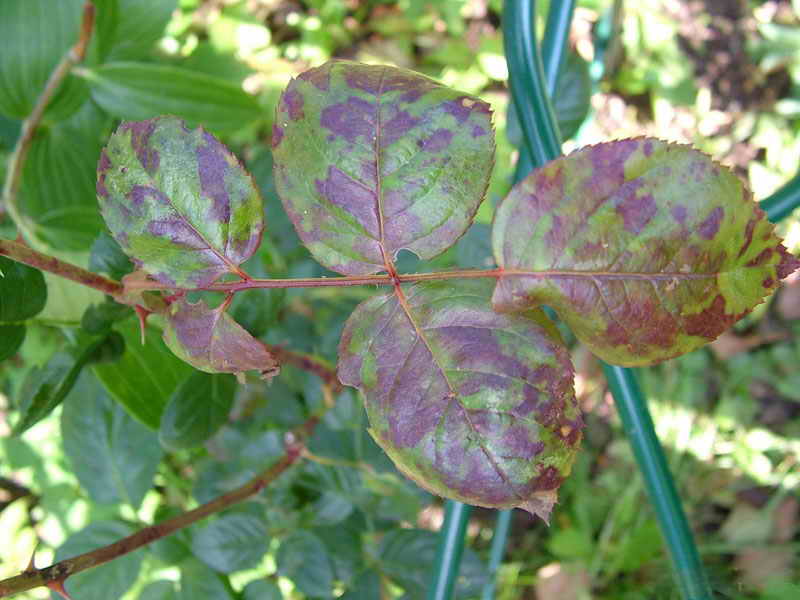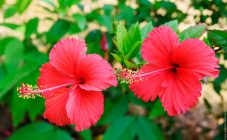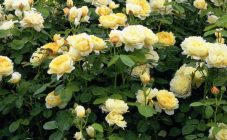Content:
To date, breeders have bred more than 20,000 different varieties of roses, which differ from each other in the shape of the buds, the height and structure of the bushes, the duration of flowering. They are grown by florists living in different countries and climatic zones. Among all its "congeners", the park rose Robusta stands out, which is a real natural decoration.
It is popular with most flower growers due to its unique appearance, as well as unpretentious care. A flower bed with blooming roses attracts the eyes of everyone who passes by, and the neighbors want to grow the same beauty on their backyard.
General information about culture
The place where the Robusta rose was bred was a German nursery, which belonged to a family of breeders by the name of Cordes. The first mention of this variety dates back to 1979, which was recorded by botanists who study Robusta. The culture belongs to the number of landscape gardeners, and the ancient Rugosa variety acts as its progenitor. It was thanks to him that Robusta rose received the title "wrinkled".
Growing the beautiful Robusta rose will only bring flower growers pleasure, since the culture takes root well in almost any climatic zone of Russia. In addition to the fact that when planting, you need to follow some rules of agricultural technology, caring for the plant presents absolutely no difficulties.
Rose Robusta description and characteristics of the variety
Rose Robusta is a small shrub that can reach only 1.5 m in height. You can distinguish this variety from other representatives of elegant roses by the following characteristics and features:
- symmetrical and neat scarlet buds, with small stamens, which are extremely problematic to notice with the naked eye;
- the elongated shape of the buds, and after they bloom, they take the form of brushes, on which there are often 5-10 flowers;
- large, rich green and wrinkled foliage, which acts as a wonderful contrast to the variegated flowers, endowing the Robusta rose with a peculiar beauty and unique charm;
- a high level of winter hardiness, but if you choose an unsuitable site for planting a plant, it can be affected by various diseases and spotting.
The flowering culture, which begins in spring and ends with the first autumn frosts, is continuous and abundant. The buds are not afraid of direct sunlight and rain, but it is worth noting that they have practically no aroma.
With the help of low and strong shrubs, you can create luxurious hedges in an original way, which will become a real pearl of your personal plot. Rose Robusta looks advantageous both for a single planting and in a large garden bed, next to other plant and flower crops.
Before embarking on a thorough study of the characteristics of this variety, you need to understand that the Robusta rose belongs to the scrub class of medium-growing plants.With the help of the famous Rugosa variety, two unique varieties of culture were obtained - Pink Robusta rose and Cordeo Robusta. The first is distinguished by delicate pink flowers, large buds, and not so long and sharp thorns. Cordeo Robusta is not so attractive, but due to its strong resistance, these two varieties are not afraid of parasite attacks and bad weather conditions.
Recommendations for cultivation and maintenance of Robusta rose
Gardeners who are just starting to grow rose bushes are very often interested in what differences exist in the agricultural technology of a particular plant variety. So, there are practically no differences, except that the pruning of Pink Robusta should be deeper in relation to the rest of the varieties. It is caused by the exuberant growth of rose bushes, both in height and width.
The growth and reproduction of the Robusta rose is possible even in those areas where the land does not have a rich composition. But in order for the plants to grow and develop well, the soil, nevertheless, must first be prepared for planting. Preparatory activities include the following points:
- Preparation of planting holes, the size of which should be 70 * 70 cm. A small amount of fertilizer must be applied to the soil (some experienced flower growers use ready-made mineral complexes, for example, Kemira Universal).
- As for the consumption of top dressing, it should be no more than 100 g per shrub (provided that a group method of planting a Robusta rose is planned).
- Before planting seedlings in the ground, their root system must be soaked in a growth stimulator for 3-4 hours in order to ensure the plant's active development and growth.
- At the bottom of each planting hole, you need to pour a thin layer of drainage from small pebbles or expanded clay.
- The seedlings must be carefully placed in the hole, and then covered with soil. At the end of the planting, the planted roses must be watered abundantly, and the ground around the seedlings must be mulched.
In the autumn season, it is necessary to prune diseased and too long branches, and carefully examine all pink shrubs for the presence of fungal diseases. It is worth remembering that you need to inspect the rose regularly, as this will help to detect harmful insects or any disease in time.
In order for the rose bushes to endure the winter well, they must be properly prepared for wintering. Novice growers need to know that it is strictly forbidden to cut the branches of a powerful shrub too short for the winter. This can lead to a weakening of the plant, which subsequently leads to the lack of buds in the spring. Before the onset of frost, the branches should be slightly bent to the ground, and spruce branches should be placed between them. If forecasters predict a too cold and harsh winter, then it may be necessary to build a small frame, which will need to cover the plantings of Robusta roses.
Diseases and pests
Rose Robusta can be harmed by various diseases and pests. Despite the fact that the plant is highly immune, it does not possess absolute protection. So, when growing this variety, you can face the following diseases:
- Dark spots that appear on foliage. Gradually, the leaves begin to wither and turn yellow, and they must be removed immediately. To avoid contamination of the rest of the rose bushes, they should be sprayed with a solution of copper and zinc.
- Powdery mildew, which forms on the foliage of a rose in the form of white dust, which looks a bit like flour. With the help of a fungicide, you need to spray the bushes, and then periodically water them with infusion from the "mullein".
- Rust, which is a reddish stain that forms on foliage. In most cases, such a disease manifests itself on the lower part of the leaves, and it is also necessary to fight it with the help of a fungicide.
Experienced as well as novice growers alike may be attacked by aphids when growing Robusta roses. These parasites can be easily seen with the naked eye, and it is possible to get rid of them with the help of such drugs as Karbofos, Iskra Bio and Fitoverm. Before using this or that tool, be sure to study the instructions for use. Incorrect dosage can significantly harm the rose or even lead to its death.
Advantages and disadvantages of Robusta rose in comparison with other varieties
As for the disadvantages of the Robusta rose, they are practically absent, due to which the culture has become popular with flower growers. But, at the same time, a number of significant advantages can be identified that make a rose worthy in relation to other plants:
- The area where Robusta roses are planted is an indisputable decoration of any garden.
- With the help of a dense and low fence made of shrubs, you can arrange not only your summer cottage, but also any public place, park or alley.
- Besides the fact that the rose is used for decorative purposes, it is very often used in cooking. So, from the petals of the plant, they make delicious tea and jam, which you can enjoy in winter.
- Cosmetologists often use rose as an aromatic material. With the addition of petals, you can take hot baths and also use them as face masks.
After familiarizing yourself with all the rules and recommendations regarding the proper care of the Robusta rose, you can grow plants that, with the onset of spring, will delight with their unique flowering. All the efforts of both an experienced and a novice gardener, which will be invested, will certainly lead to the desired result. As a reward for his diligent work, the grower will certainly be rewarded with red and unique buds.


















